
Andrew Biel’s Trail Guide to the Body is a renowned educational resource for manual therapists, instructors, and students. This award-winning guide provides a clear, step-by-step approach to understanding the musculoskeletal system through detailed illustrations and practical palpation techniques. Designed for ease of learning, it equips readers with essential knowledge to enhance their understanding of human anatomy and movement. The book’s structured format and user-friendly design make it an invaluable tool for both classroom and clinical settings.
Purpose and Significance of the Guide
Andrew Biel’s Trail Guide to the Body serves as an essential educational tool for manual therapists, movement instructors, and students. Its primary purpose is to provide a comprehensive yet accessible guide to understanding the musculoskeletal system, emphasizing palpation techniques and anatomical knowledge. The guide bridges the gap between theoretical learning and practical application, making it invaluable for both classroom instruction and clinical practice. Its significance lies in its ability to simplify complex anatomical concepts, offering a clear, step-by-step approach that enhances learning and retention. This resource has become a cornerstone in the field of manual therapy, empowering professionals to deliver effective treatments and educate others with precision and confidence.
Andrew Biel’s Background and Expertise
Andrew Biel is a respected figure in the fields of manual therapy and anatomy education. With extensive experience as both a practitioner and an educator, he has developed a deep understanding of the musculoskeletal system. Biel’s expertise lies in his ability to translate complex anatomical concepts into accessible, practical knowledge. His work reflects a commitment to helping students and professionals alike master palpation techniques and movement assessment. Through his books and teaching, Biel has established himself as a leading voice in anatomy education, making him a trusted resource for those seeking to enhance their skills in manual therapy and movement training. His background includes years of hands-on experience, which informs the clarity and precision of his instructional methods.
Overview of the Book’s Structure
Trail Guide to the Body is meticulously organized to provide a comprehensive understanding of anatomy and palpation. The book is divided into clear sections, each focusing on specific anatomical regions, such as the head, neck, shoulders, upper limbs, torso, lower limbs, and pelvis. Detailed illustrations and step-by-step instructions guide readers through the process of identifying and palpating musculoskeletal structures. The logical flow of the book ensures that concepts are introduced progressively, making it accessible for both students and professionals. Additional resources, including a workbook and DVD, complement the text, offering practical exercises and visual learning aids. This structured approach enhances learning efficiency and retention, making the guide an indispensable tool for manual therapists and anatomy enthusiasts alike.

The Musculoskeletal System
The musculoskeletal system, comprising muscles, bones, and connective tissue, is explored in-depth. The guide clarifies their functions and interconnections, aiding manual therapists and students in understanding human anatomy.
Understanding Muscles and Their Functions
Muscles are the body’s primary movers, enabling motion and stability. Andrew Biel’s guide details their structure, functions, and classifications, such as flexors, extensors, and rotators. It explains how muscles work in groups to facilitate movement, highlighting their roles in posture, locomotion, and maintaining bodily alignment. The text emphasizes the importance of understanding muscle origins, insertions, and actions, providing a foundational knowledge essential for manual therapists and students. Through clear descriptions and illustrations, the guide simplifies complex anatomical concepts, making muscle functions accessible and practical for application in clinical and therapeutic settings.
The Role of Bones in Movement
Bones form the structural framework of the body, enabling movement by serving as anchors for muscles and providing leverage for motion. Andrew Biel’s guide elucidates how bones interact with muscles and joints to facilitate locomotion and maintain posture. The book details the anatomy of bones, highlighting their shapes, surfaces, and articulations, which are crucial for understanding movement mechanics. It also explores how bones distribute forces, absorb shock, and protect internal organs. By linking bone structure to function, the guide helps readers appreciate the skeletal system’s vital role in movement. This knowledge is essential for manual therapists, enabling them to better assess and address musculoskeletal imbalances and injuries.
Connective Tissue and Its Importance
Connective tissue plays a crucial role in the musculoskeletal system by providing support, stability, and connectivity between bones, muscles, and other structures. Andrew Biel’s guide highlights how connective tissue, such as tendons, ligaments, and fascia, facilitates movement by transmitting forces and maintaining proper alignment. It also emphasizes the tissue’s role in protecting joints and enabling smooth articulation. Understanding connective tissue is essential for manual therapists, as it influences palpation techniques and the effectiveness of treatments like massage and stretching. Biel’s work underscores the interconnectedness of the body, revealing how connective tissue contributes to overall movement efficiency and structural integrity. This knowledge is vital for assessing and addressing musculoskeletal imbalances.
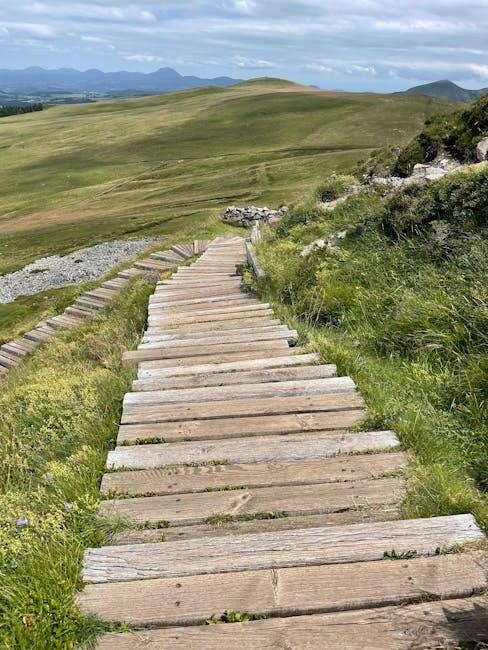
Palpation Techniques
Andrew Biel’s guide teaches palpation with ease and precision, offering a systematic approach to identifying musculoskeletal structures. The book’s clear, practical methods make learning accessible and effective.
Palpation is a fundamental skill in manual therapy, involving the use of touch to assess and identify soft tissue structures. Andrew Biel’s Trail Guide to the Body introduces palpation as a systematic process, emphasizing ease and precision. The guide provides a clear, step-by-step approach to locating muscles, bones, and connective tissues, making it accessible for students and therapists alike. With detailed illustrations and practical instructions, the book helps readers develop the confidence and accuracy needed for effective palpation. This foundational skill is crucial for understanding anatomy and applying manual techniques in clinical and therapeutic settings.
Step-by-Step Palpation Methods
Andrew Biel’s Trail Guide to the Body offers a systematic, step-by-step approach to palpation, guiding learners through the process of identifying anatomical structures. The guide begins with clear instructions on positioning and touch techniques, progressing to detailed methods for locating muscles, bones, and connective tissues; Each step is supported by illustrations, ensuring accuracy and ease of understanding. The book emphasizes a logical sequence, allowing learners to build confidence and precision. By breaking down complex palpation processes into manageable steps, Biel’s guide enables therapists and students to master the skill effectively. This structured approach ensures that readers can apply their knowledge in practical, real-world scenarios with clarity and professionalism.
Enhancing Palpation Precision
Andrew Biel’s Trail Guide to the Body provides expert techniques to refine palpation skills, ensuring accuracy and confidence. The guide emphasizes the importance of developing touch sensitivity and understanding tissue texture, tone, and depth. By following structured exercises, learners can improve their ability to distinguish between muscles, bones, and connective tissues. The book also offers practical tips for maintaining proper body mechanics during palpation, reducing fatigue and enhancing precision. Through detailed illustrations and clear instructions, Biel’s guide helps manual therapists and students refine their palpation skills, enabling them to apply these techniques effectively in clinical and educational settings. This focus on precision makes the guide an essential tool for mastering hands-on anatomy.
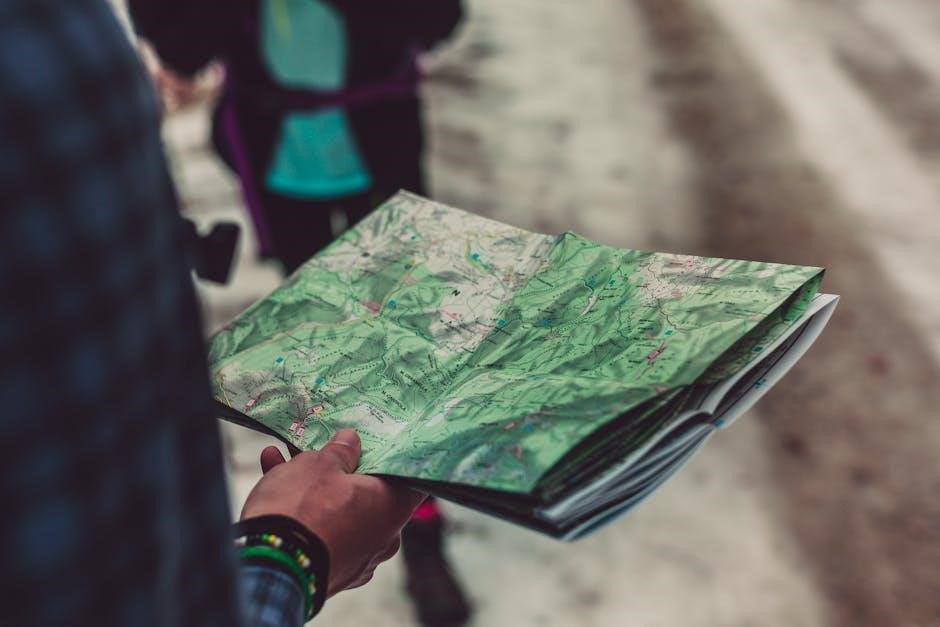
Regional Anatomy
Andrew Biel’s guide divides the body into key regions, focusing on the head, neck, shoulders, upper limbs, torso, lower limbs, and pelvis. It provides detailed insights.
Head, Neck, and Shoulders
Andrew Biel’s guide dedicates a detailed section to the anatomy of the head, neck, and shoulders, emphasizing their interconnected roles in movement and posture. The text explores the complex musculature of these regions, including the scalp, cervical spine, and shoulder girdle. It provides clear instructions for palpating key structures, such as the occipital bones, cervical vertebrae, and scapular muscles. The guide also highlights common areas of tension and dysfunction, offering practical insights for manual therapists. Through vivid illustrations and step-by-step descriptions, Biel makes the anatomy of these regions accessible to students and professionals alike. This section is particularly valuable for understanding the biomechanics of the upper body and its impact on overall movement patterns.
Upper Limbs and Torso
Andrew Biel’s guide provides a comprehensive exploration of the upper limbs and torso, detailing their intricate anatomy and functional roles. The section covers the musculature of the arms, shoulders, and chest, as well as the ribcage and abdominal wall. It emphasizes the importance of understanding the connections between these regions for effective manual therapy and movement analysis. The guide includes detailed illustrations and step-by-step palpation techniques to identify key structures, such as the scapula, humerus, and thoracic spine. Biel also highlights the biomechanics of the shoulder joint and its role in movement patterns. This section is invaluable for students and practitioners seeking to master the anatomy of the upper body and its integration with the torso.
Lower Limbs and Pelvis
Andrew Biel’s guide dedicates a section to the lower limbs and pelvis, providing detailed insights into their anatomy and function. It explores the musculature of the hips, thighs, legs, and feet, as well as the pelvic girdle and its role in movement. The guide emphasizes the interconnectedness of these structures, essential for understanding gait, posture, and biomechanics. Step-by-step palpation techniques are included to identify key landmarks like the ilium, femur, and tibia. Biel also discusses the importance of the pelvis in stabilizing the body and transferring forces during movement. This section is particularly useful for manual therapists and students aiming to enhance their understanding of the lower body’s complex anatomy and its role in overall mobility.

Kinesiology and Movement
Andrew Biel’s guide explores the fundamentals of kinesiology and movement, offering insights into the mechanics of motion and practical applications for therapists and students.
Understanding Movement Patterns
Andrew Biel’s Trail Guide to the Body provides a comprehensive exploration of movement patterns, breaking down the complexities of human motion into understandable components. The guide emphasizes the interplay between joints, muscles, and connective tissues, offering a clear framework for analyzing how the body moves. By focusing on functional anatomy, it helps readers identify efficient and inefficient movement strategies. This section is particularly valuable for manual therapists and movement educators, as it bridges the gap between theoretical knowledge and practical application. The book’s step-by-step approach ensures that learners can apply these concepts in real-world scenarios, enhancing their ability to assess and improve movement patterns in themselves and others. The visual aids and detailed explanations make complex concepts accessible, fostering a deeper understanding of kinesthetic awareness and its role in overall well-being.
Biomechanics of the Body
Andrew Biel’s Trail Guide to the Body delves into the biomechanics of the body, offering insights into how mechanical principles govern human movement. The guide explores the forces acting on the body, such as gravity and muscle tension, and how they influence motion. By examining the relationship between structure and function, readers gain a deeper understanding of how joints, bones, and soft tissues interact to produce efficient movement. The book’s detailed illustrations and clear explanations make complex biomechanical concepts accessible, enabling manual therapists and movement professionals to apply this knowledge in practical settings. This section is particularly useful for understanding the mechanical aspects of injury prevention and performance enhancement, making it an essential resource for anyone studying or working in the field of human movement.
Assessing Movement Efficiency
Andrew Biel’s Trail Guide to the Body provides practical techniques for assessing movement efficiency, ensuring professionals can identify imbalances and optimize functionality. The guide offers a systematic approach to evaluating movement patterns, enabling therapists and educators to pinpoint inefficiencies and tailor interventions effectively.
By combining biomechanical insights with hands-on assessment methods, the guide enhances the ability to improve movement quality and overall performance. This section is invaluable for manual therapists, movement educators, and students seeking to refine their understanding of human movement and its applications in clinical and educational settings.
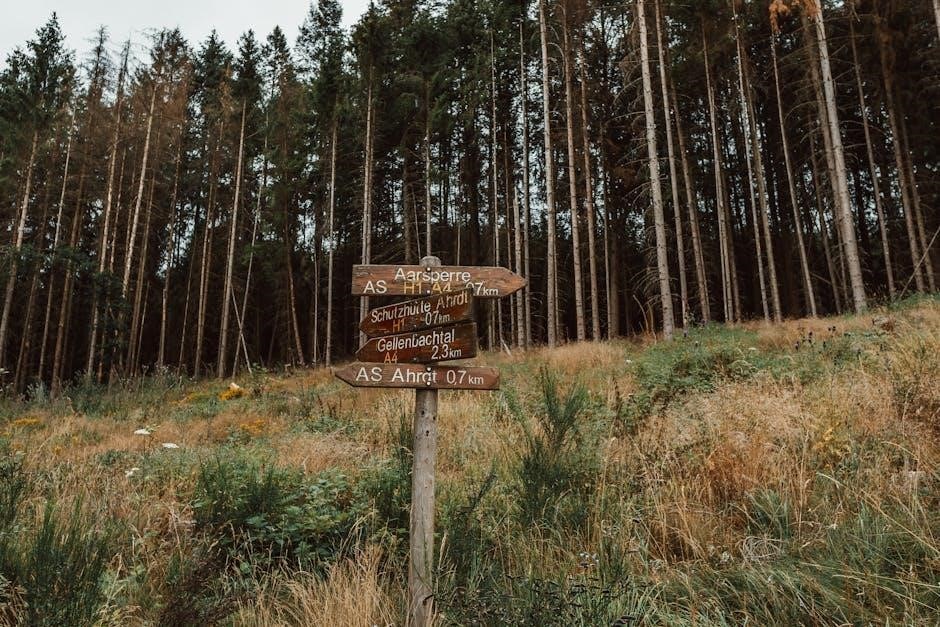
Manual Therapy Applications
Andrew Biel’s guide offers practical methods for manual therapy, including massage techniques, stretching, and soft tissue manipulation, enhancing professionals’ skills in treating musculoskeletal disorders effectively.
Massage Techniques
Andrew Biel’s Trail Guide to the Body provides a comprehensive exploration of massage techniques, offering practical methods for manual therapists. The guide emphasizes the importance of efficiency and precision in therapeutic approaches, ensuring effective treatment of musculoskeletal disorders. Detailed illustrations and clear instructions make it easier for professionals to master various massage modalities. The book also serves as a required text for many massage therapy programs, highlighting its credibility and widespread adoption. By focusing on both theory and application, Biel’s work equips practitioners with the skills needed to deliver targeted, results-driven treatments. This section is particularly valuable for those seeking to deepen their understanding of massage as a therapeutic tool.
Stretching and Mobilization
Andrew Biel’s Trail Guide to the Body provides a detailed exploration of stretching and mobilization techniques, emphasizing their role in enhancing movement efficiency. The guide offers practical methods for improving flexibility and range of motion, making it an essential resource for manual therapists and students. By integrating movement training with anatomical insights, Biel’s work helps practitioners understand how to apply these techniques effectively. The structured approach ensures that readers can easily grasp and implement the methods, whether for therapeutic purposes or to improve overall physical function. This section is particularly valuable for those seeking to enhance their understanding of how stretching and mobilization contribute to optimal musculoskeletal health and performance.
Soft Tissue Manipulation
Andrew Biel’s Trail Guide to the Body provides a comprehensive understanding of soft tissue manipulation, a key technique in manual therapy. This section highlights practical methods for identifying and addressing restrictions in soft tissues, such as muscles, tendons, and ligaments. Biel’s guide emphasizes the importance of precise palpation skills to effectively manipulate soft tissues, promoting improved circulation, reduced tension, and enhanced mobility. The techniques are presented in a clear, step-by-step manner, making it accessible for both seasoned therapists and students. By focusing on the anatomical and functional relationships of soft tissues, the guide offers a valuable resource for applying these methods in clinical and therapeutic settings to achieve optimal outcomes for clients and patients.
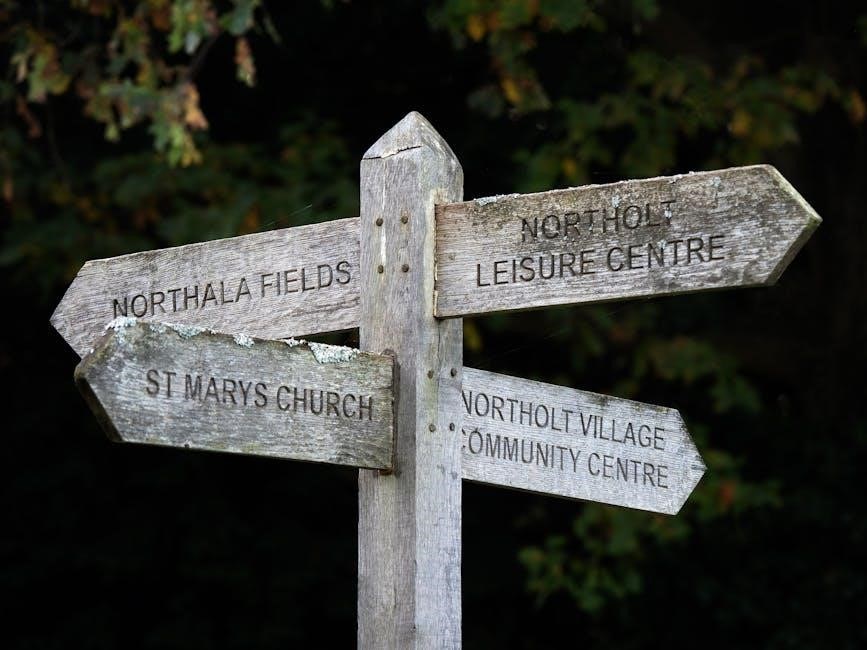
Workbook and DVD Guide
The workbook and DVD guide provide practical exercises and visual learning tools, enhancing the learning experience with hands-on activities and detailed demonstrations.
Role of the Workbook
The workbook accompanying Trail Guide to the Body serves as a practical companion, offering exercises and activities to reinforce anatomical knowledge. It provides hands-on learning opportunities, enabling users to apply concepts from the main text. Designed for both students and professionals, the workbook includes quizzes, labeling exercises, and palpation drills to enhance retention and understanding of musculoskeletal structures. Its structured format allows learners to progress systematically, mastering complex anatomical information through interactive engagement.
By focusing on active learning, the workbook ensures that readers can confidently identify and palpate anatomical landmarks, making it an indispensable resource for manual therapists, movement educators, and anatomy enthusiasts alike.
Visual Learning with the DVD
The DVD accompanying Trail Guide to the Body offers a dynamic visual learning experience, complementing the textbook with demonstrations and animations. It provides clear, real-time examples of palpation techniques, movement patterns, and anatomical structures, making complex concepts easier to grasp. The DVD’s 3D illustrations and step-by-step guides allow learners to visualize the musculoskeletal system in action, enhancing their understanding of human anatomy and movement mechanics. This resource is particularly beneficial for visual learners, as it brings the subject to life through engaging and interactive content. By bridging the gap between theory and practice, the DVD becomes an indispensable tool for students, manual therapists, and movement educators seeking to deepen their anatomical knowledge and practical skills.
Practical Exercises
The practical exercises in Trail Guide to the Body are designed to reinforce anatomical knowledge through hands-on application. These exercises guide learners in identifying and palpating musculoskeletal structures, assessing movement patterns, and understanding functional anatomy. Step-by-step instructions and visual cues help users develop precision and confidence in their techniques. The exercises cater to various learning styles, combining tactile practice with visual and kinesthetic approaches. By applying theoretical concepts to real-world scenarios, learners can enhance their understanding of human movement and improve their skills in manual therapy and assessment; These exercises are invaluable for students, manual therapists, and movement professionals seeking to bridge the gap between classroom learning and practical application. They provide a comprehensive and engaging way to master the material.

Teaching and Learning Resources
Andrew Biel’s Trail Guide to the Body offers comprehensive teaching and learning resources, aiding both educators and students in anatomy education through its clear and memorable approach, supported by supplementary materials.
Instructor Support Materials
Andrew Biel’s Trail Guide to the Body provides robust instructor support materials, enhancing educators’ ability to deliver anatomy and movement lessons effectively. These resources include a detailed workbook, a companion DVD, and online materials that complement the main text. The workbook offers structured exercises and quizzes, helping instructors assess student progress and reinforce key concepts. The DVD provides visual demonstrations of palpation techniques and anatomical structures, making complex topics more accessible. Additionally, instructors can access digital tools such as PowerPoint slides, lesson plans, and interactive quizzes. These resources are designed to simplify teaching, engage students, and ensure a comprehensive understanding of musculoskeletal anatomy and palpation techniques.
Student Study Aids
Andrew Biel’s Trail Guide to the Body offers comprehensive study aids tailored to support students in mastering musculoskeletal anatomy and palpation. The workbook provides structured exercises, review questions, and labeling activities to reinforce learning. The companion DVD includes visual demonstrations of anatomical structures and techniques, aiding visual learners. Additionally, interactive online tools such as flashcards and quizzes help students test their knowledge and identify areas for improvement. These resources are designed to complement the main textbook, ensuring students can engage with the material in multiple ways and deepen their understanding of the subject. The study aids are user-friendly and accessible, making anatomy education both effective and enjoyable for learners at all levels.
Interactive Learning Tools
The Trail Guide to the Body is supported by a range of interactive learning tools designed to enhance engagement and comprehension. These include 3D anatomical models, virtual palpation simulations, and interactive diagrams that allow students to explore musculoskeletal structures in depth. The tools are accessible online, providing flexibility for learners to study at their own pace. Additionally, the interactive features enable students to test their knowledge through quizzes and games, reinforcing key concepts. These resources are particularly useful for visual and kinesthetic learners, offering a dynamic way to grasp complex anatomical information. The integration of technology with traditional learning methods ensures a comprehensive and immersive educational experience, aligning perfectly with the book’s structured approach to anatomy education.

Trail Guide to Movement
The Trail Guide to Movement is a companion book that explores functional movement and its practical applications. It offers insights into movement patterns and biomechanics, enhancing understanding of the body’s motion. The guide is designed to complement the original Trail Guide to the Body, providing a comprehensive approach to anatomy and movement education. With its clear explanations and visual aids, it is an essential resource for students, therapists, and anyone seeking to improve movement efficiency and performance.
Overview of the Companion Book
The Trail Guide to Movement serves as a comprehensive companion to Andrew Biel’s original Trail Guide to the Body. This second edition focuses on functional movement, offering practical insights into how the body moves. It complements the original guide by emphasizing the application of anatomical knowledge to real-world scenarios. The book is structured to help readers understand movement patterns, biomechanics, and the interplay of muscles, bones, and connective tissues. With clear explanations and visual aids, it bridges the gap between theoretical anatomy and practical movement. This resource is invaluable for manual therapists, movement educators, and students seeking to enhance their understanding of human motion and its applications in therapy and training.
Understanding Functional Movement
Andrew Biel’s Trail Guide to Movement delves into the principles of functional movement, exploring how the body moves efficiently in daily activities and specialized tasks; It examines movement patterns, biomechanics, and the interplay of muscles, bones, and connective tissues. The guide emphasizes understanding movement as a holistic process, rather than isolating individual components. By focusing on functional anatomy, it helps readers appreciate how the body adapts to various demands, whether in sports, work, or everyday life. This knowledge is crucial for manual therapists, movement educators, and students aiming to enhance performance, prevent injuries, and restore mobility. The text is enriched with illustrations and practical examples, making complex concepts accessible and applicable.
Practical Applications
Andrew Biel’s Trail Guide to the Body offers practical applications for manual therapists, movement educators, and students. It provides hands-on techniques for palpating musculoskeletal structures, assessing movement patterns, and applying therapeutic interventions. The guide includes step-by-step methods for enhancing palpation precision and understanding functional anatomy. Practical exercises and real-world examples help readers apply theoretical knowledge to clinical settings. Additionally, the workbook and DVD companion tools offer visual and interactive learning opportunities, making complex concepts accessible. These resources enable professionals to improve client outcomes, prevent injuries, and restore mobility. The guide’s focus on practical application makes it an essential tool for anyone working in manual therapy, physical education, or healthcare.
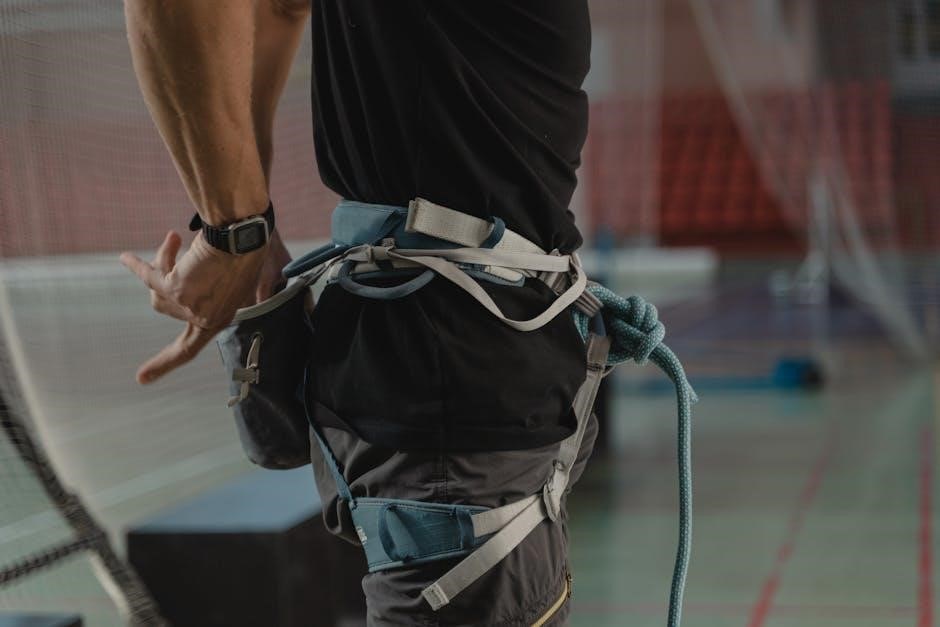
Reception and Reviews
Andrew Biel’s Trail Guide to the Body has received widespread acclaim for its clear, engaging approach to anatomy and movement. It is widely endorsed by professionals and praised by students for its practical insights and user-friendly design, making it a trusted resource in the field of manual therapy and education.
Professional Endorsements
Trail Guide to the Body has garnered exceptional praise from professionals across various fields. Massage therapists, physical therapists, and anatomy instructors consistently recommend it for its clarity and depth. Many have highlighted its ability to make complex anatomical concepts accessible, ensuring it remains a cornerstone in both educational and clinical settings. The guide’s step-by-step palpation techniques and detailed illustrations have been particularly commended, making it an indispensable resource for practitioners seeking to enhance their understanding and skills. Its widespread adoption and positive reviews underscore its value as a leading educational tool in the field of manual therapy and movement science.
Student Feedback
Students widely praise Trail Guide to the Body for its user-friendly approach and clear explanations. Many appreciate the detailed illustrations and step-by-step instructions, which simplify complex anatomical concepts. The guide’s portability and comprehensive coverage make it a favorite among those learning palpation and musculoskeletal anatomy. Students often highlight the workbook and DVD as invaluable tools for reinforcing learning and improving practical skills. The visual and hands-on resources are particularly commended for enhancing understanding and retention. Overall, the guide is celebrated for making anatomy accessible and engaging, making it a trusted companion for students in manual therapy and related fields.
Awards and Recognition
Andrew Biel’s Trail Guide to the Body has garnered significant acclaim and awards within the fields of manual therapy and anatomy education. This esteemed guide is frequently recognized for its clarity, comprehensive coverage, and innovative approach to teaching musculoskeletal anatomy; It has been celebrated as a bestseller and a seminal work in its field, earning praise from professionals and educators alike. The book’s ability to simplify complex concepts has solidified its reputation as an indispensable resource for learning anatomy. Its awards and recognition underscore its impact on anatomy education and its role in shaping the understanding of human movement for both students and practitioners.